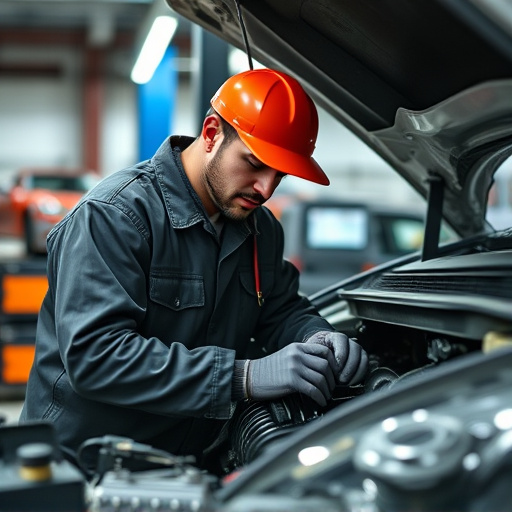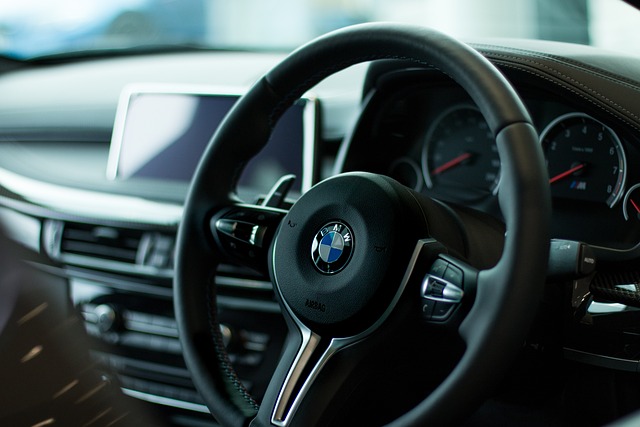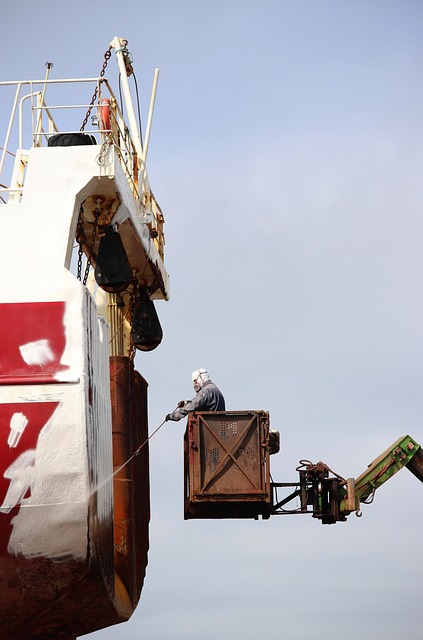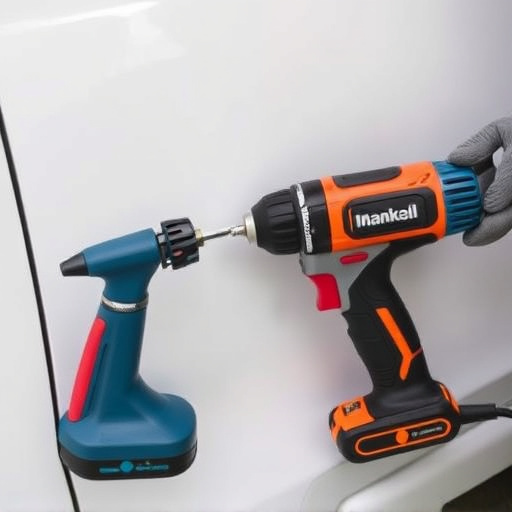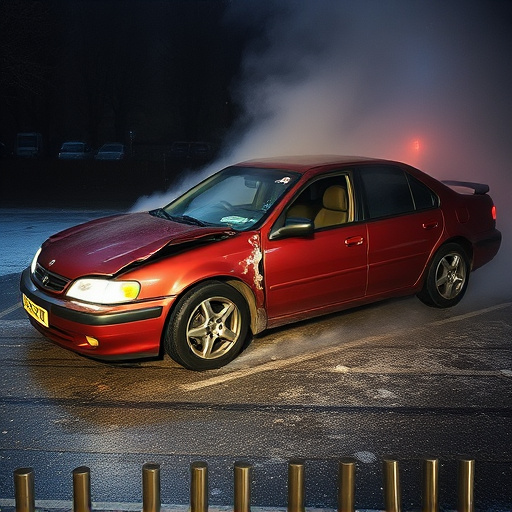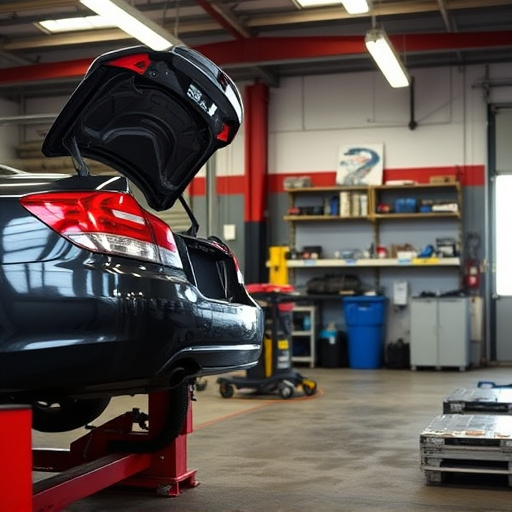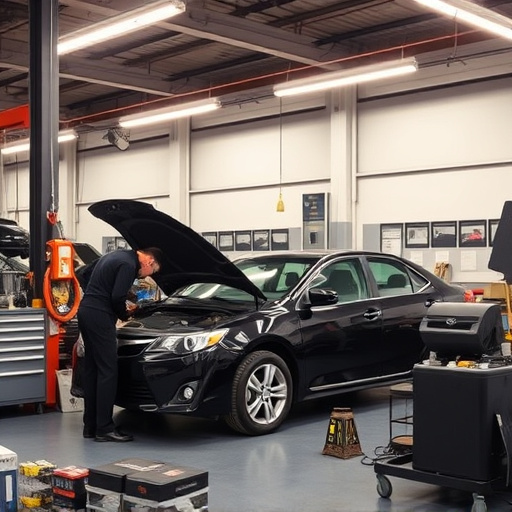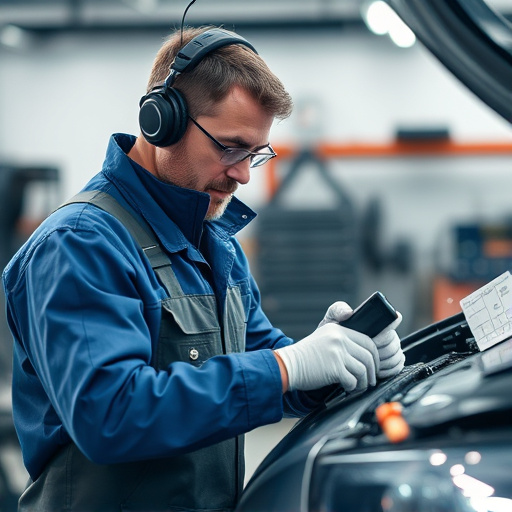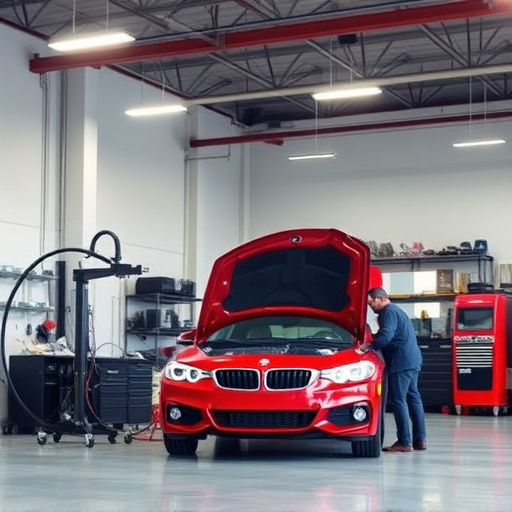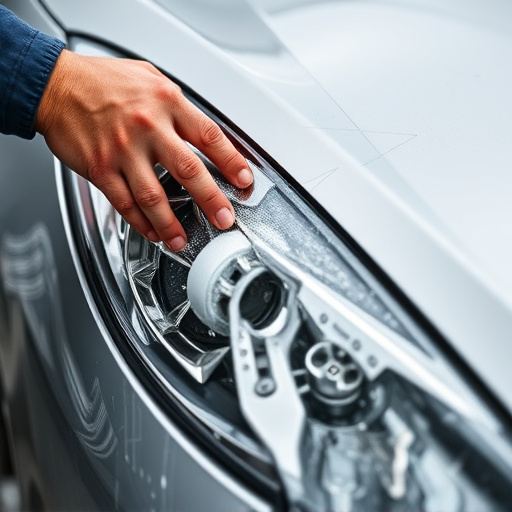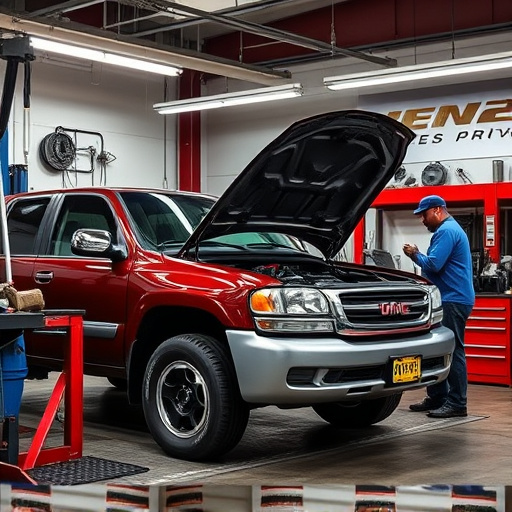Auto body frame repair relies on specialized tools like hammers, pliers, shears, tape measures, and calipers for precise metal manipulation. Modern technology, including robotic welding, CAD software, paintless dent repair, and advanced frame straightening machines, speeds up repairs while maintaining accuracy and structural integrity. Safety and efficiency are prioritized through innovative equipment, minimizing errors and damage, and restoring vehicles to pre-accident conditions promptly.
In the realm of auto body frame repair, staying up-to-date with modern equipment is crucial for ensuring precision, efficiency, and safety. Today’s professional mechanics rely on a sophisticated array of tools and technologies to navigate the intricate process of straightening vehicle frames. From specialized hydraulic presses to advanced laser measurement systems, this article explores the essential equipment shaping the future of auto body frame repair.
- Tools Essential for Auto Body Frame Repair
- Modern Technology in Frame Straightening
- Safety and Efficiency Considerations
Tools Essential for Auto Body Frame Repair

In the realm of auto body frame repair, a well-equipped technician’s toolkit is their most valuable asset. Essential tools for this intricate car bodywork process include specialized hammers, such as ball peen and cross pein hammers, which are used to carefully straighten and reshape metal panels without causing damage. Pliers, both adjustable and needle nose, are indispensable for gripping and bending small parts with precision.
Additionally, a set of high-quality shears or snips is crucial for cutting away damaged areas and creating new openings for replacement components. The use of precision measuring tools, such as tape measures and calipers, ensures accurate dimensions during the repair process. In automotive collision repair, these tools enable technicians to make precise cuts, bends, and adjustments, ultimately facilitating a seamless restoration of the vehicle’s structural integrity.
Modern Technology in Frame Straightening

Modern technology has significantly transformed the landscape of auto body frame repair, making processes faster, more precise, and efficient. Equipment like robotic welding systems and computer-aided design (CAD) software enable precise measurements and accurate repairs, ensuring that vehicles return to their original structural integrity. These advancements also facilitate paintless dent repair, where specialized tools are used to push out dents without damaging the surrounding panel or requiring repainting, thereby saving time and money for both repair shops and vehicle owners.
Additionally, modern frame straightening machines use advanced hydraulics and computer control systems to accurately realign distorted frames. This technology not only improves the structural integrity of vehicles but also ensures that they meet safety standards. As a result, today’s auto body work focuses on using cutting-edge tools and techniques to achieve seamless repairs, maintaining the vehicle’s original quality and performance while minimizing downtime for customers.
Safety and Efficiency Considerations
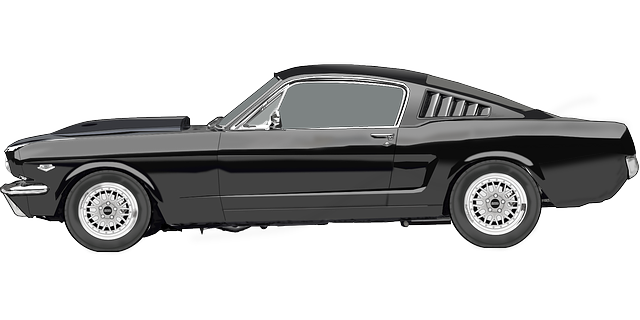
In modern auto body frame repair, safety is paramount. Today’s collision repair shops and auto repair professionals rely on advanced equipment designed to ensure both worker protection and vehicle integrity. This includes robust frame racks capable of securely holding vehicles in various angles during the intricate alignment process, minimizing the risk of human error or accidental damage. Additionally, computer-aided design (CAD) software plays a crucial role, enabling precise measurements and calculations that were once manual and prone to errors. This technological integration not only enhances accuracy but also expedites the repair process, making auto body frame repair more efficient than ever before.
Efficient workflow is another key consideration. Auto body services now incorporate state-of-the-art tools like laser measuring devices and robotic welding systems. These innovations ensure consistent quality and speed up turnaround times significantly. Moreover, these advanced tools facilitate the precise removal and replacement of damaged panels, preserving the vehicle’s structural integrity and aesthetic appeal. As a result, customers can expect superior auto body repair that restores their vehicles to pre-accident condition, all while prioritizing safety at every step in the collision repair process.
In conclusion, modern auto body frame repair leverages a combination of specialized tools and innovative technology to enhance precision, safety, and efficiency. From hand tools for initial assessments to advanced machine systems for straightening, today’s industry standards ensure quality and reliability in restoring vehicle structures. As the field continues to evolve, focusing on safety measures and staying updated with technological advancements is key for professionals in this domain.
